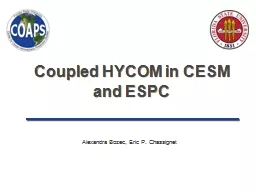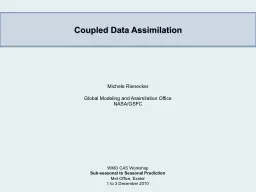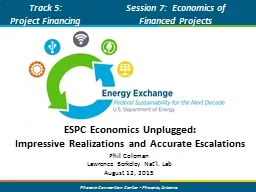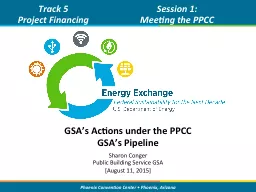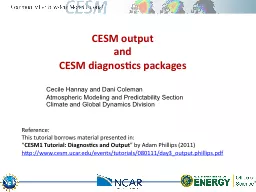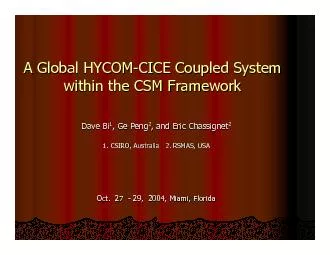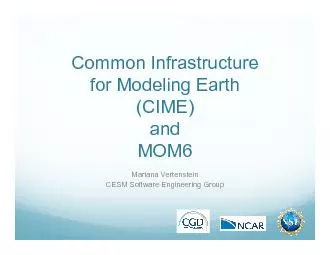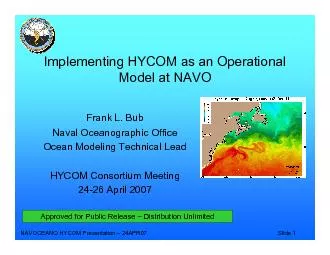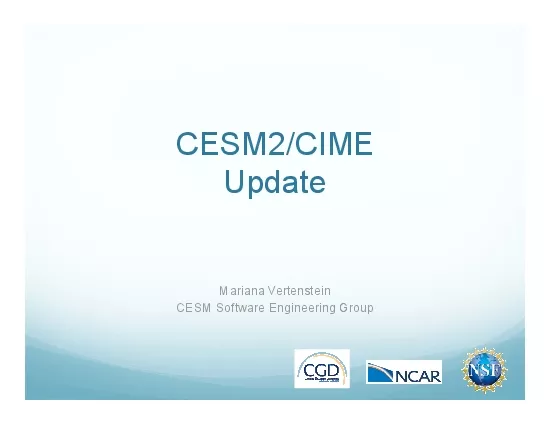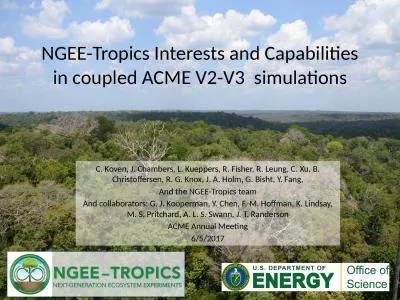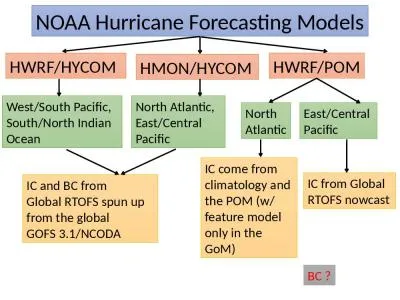PPT-Coupled HYCOM in CESM and ESPC
Author : mudth | Published Date : 2020-07-02
Alexandra Bozec Eric P Chassignet Overarching goals To produce a validated benchmark highresolution coupled oceaniceatmosphere with HYCOM as the ocean model gt
Presentation Embed Code
Download Presentation
Download Presentation The PPT/PDF document "Coupled HYCOM in CESM and ESPC" is the property of its rightful owner. Permission is granted to download and print the materials on this website for personal, non-commercial use only, and to display it on your personal computer provided you do not modify the materials and that you retain all copyright notices contained in the materials. By downloading content from our website, you accept the terms of this agreement.
Coupled HYCOM in CESM and ESPC: Transcript
Download Rules Of Document
"Coupled HYCOM in CESM and ESPC"The content belongs to its owner. You may download and print it for personal use, without modification, and keep all copyright notices. By downloading, you agree to these terms.
Related Documents

